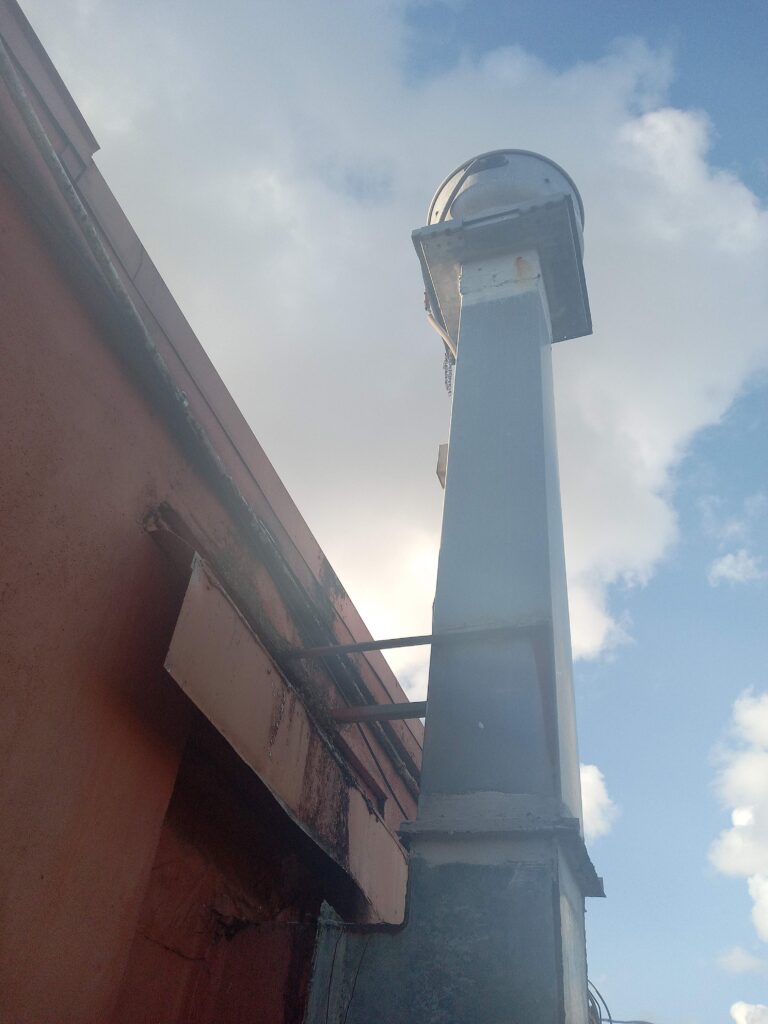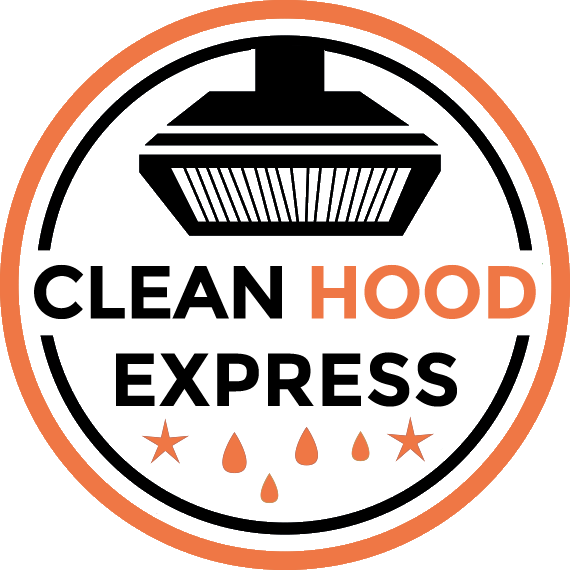Summation: Restaurant hood cleaning requires climbing wet, grease covered ladders sometimes near live electric wires carrying chemical that will eat your skin off your bones in the dark. All this while a pressurew washer is running in the background so if you fall or get injured no one can hear you scream. SO, be careful and don’t do stupid stuff when climbing ladders or cleaning restaurant kitchen hoods.

Cleaning restaurant kitchen hoods is a crucial task for maintaining a safe and efficient kitchen environment. However, this job often involves working at heights, which introduces the risk of falls and other injuries. Ladder safety is essential to ensure that cleaning tasks are completed without incident. Here’s why ladder safety is vital and some best practices to keep in mind.
Why Ladder Safety Matters
- Risk of Falls: Falls are one of the leading causes of workplace injuries, particularly in environments where workers frequently use ladders. When cleaning kitchen hoods, which are often located above cooking equipment or in hard-to-reach areas, the risk of falling is significantly heightened. A fall from even a few feet can result in serious injury, impacting not only the individual involved but also the overall operation of the restaurant.
- Workplace Safety Compliance: Ensuring ladder safety is not just about preventing injuries— it’s also a matter of compliance with workplace safety regulations. Organizations like OSHA (Occupational Safety and Health Administration) have specific guidelines regarding ladder use in the workplace. Failing to follow these guidelines can lead to penalties, fines, and increased insurance costs. Adhering to ladder safety protocols helps you stay compliant and demonstrates a commitment to the well-being of your staff.
- Protecting Equipment and Property: Improper ladder use can also lead to damage to kitchen equipment, the hood system itself, and surrounding property. A slip or fall could result in significant damage to expensive equipment, leading to costly repairs and downtime. By practicing ladder safety, you reduce the risk of accidents that could harm both personnel and property.
- Ensuring Effective Cleaning: Ladder safety isn’t just about preventing accidents— it’s also essential for ensuring that the cleaning is done properly. When workers feel secure on their ladders, they can focus more effectively on their tasks, leading to more thorough and effective cleaning. If someone is struggling with balance or feels unsafe, they may rush or miss important areas, compromising the quality of the work.
Best Practices for Ladder Safety
- Use the Right Ladder for the Job: Choosing the right ladder is the first step in ensuring safety. The ladder should be tall enough to reach the kitchen hood without requiring the worker to stand on the top rung, which is a common cause of falls. The ladder should also be made of a material that is appropriate for the kitchen environment— aluminum ladders, for example, are lightweight and durable, but care should be taken if working near electrical equipment.
- Inspect the Ladder Before Use: Before using a ladder, always inspect it for any signs of wear and tear, such as cracks, loose rungs, or bent rails. Never use a damaged ladder. If any issues are found, the ladder should be repaired or replaced before use.
- Set Up the Ladder Properly: Proper ladder setup is crucial for stability. Ensure that the ladder is on a flat, stable surface, and that the feet of the ladder are secure and won’t slip. If the floor is greasy or wet, it may be necessary to use slip-resistant mats or to dry the area thoroughly before setting up the ladder.
- Maintain Three Points of Contact: When climbing or descending a ladder, always maintain three points of contact (two hands and one foot or two feet and one hand) to ensure balance and stability. Avoid carrying tools or cleaning supplies in your hands while climbing. Instead, use a tool belt or hoist items up after you’ve reached your position.
- Work Within Your Reach: Overreaching is a common cause of falls from ladders. To avoid this, keep your body centered on the ladder and work within a comfortable range. If you need to reach farther, climb down and reposition the ladder rather than stretching or leaning.
- Never Move the Ladder While on It: Moving a ladder while standing on it is extremely dangerous and should never be attempted. Always climb down and move the ladder to a new position.
- Avoid Ladder Use When Fatigued: Using a ladder when tired or fatigued increases the risk of accidents. Ensure that workers are well-rested and alert when performing tasks that require ladder use. If someone feels tired, it’s better to take a break than to risk an accident.
Conclusion
Ladder safety is a critical component of cleaning restaurant kitchen hoods. By following best practices and ensuring that all workers are trained in proper ladder use, you can minimize the risk of injury, protect your equipment, and ensure that the job is done right. Prioritizing ladder safety not only safeguards your team but also contributes to the overall success and efficiency of your restaurant operations.

0 Comments